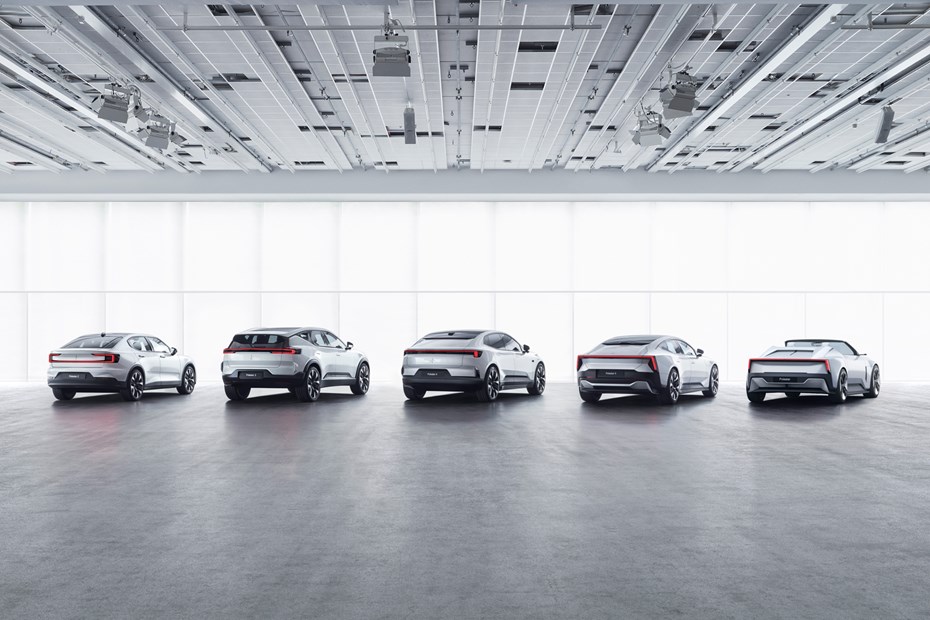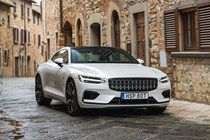Polestar is a relatively recent addition to the electric car market – and it underwent a drastic change in direction to arrive where it is today. Before it started building electric cars in 2020, Polestar was to Volvo what Gazoo Racing is to Toyota. It was a motorsports team that offered its expertise to help the Swedish brand make souped-up versions of its production cars, such as the C30 and S60.
Volvo bought Polestar in 2015 and, by the time the 2020s rolled around, it had shifted the company’s focus to EVs. Polestar became Volvo’s premium-edged spin-off electric car brand – and the fledgling company’s aims was to drag buyers away from the almighty Tesla by building cars with comparable levels of performance and technology but lashings of additional Swedish cool.
After almost a decade under Volvo’s control, it’s safe to say that Polestar has found its footing. In 2022, Polestar sold more than 51,000 cars, representing an 80% increase over the previous year’s sales. The company also managed to deliver 12,000 vehicles in the first quarter of 2023 alone, which was an increase of 23% year-on-year. That’s impressive growth for such a new car brand.
Polestar can apportion a large part of its success to its ambitious attitude. In 2022, the company announced an aggressive electrification strategy that will see it launch a new EV every year until 2026 – and the firm has already pledged to build its first carbon neutral car by 2030. That’s 20 years ahead of the UK government’s plans for carbon neutrality.
Polestar’s direction was initially steered by former Volvo CEO Hakan Samuelsson, who engineered the brand to be a more modern, hip and technology-led business than Volvo. His hope was that those decisions would attract younger customers to Polestar.
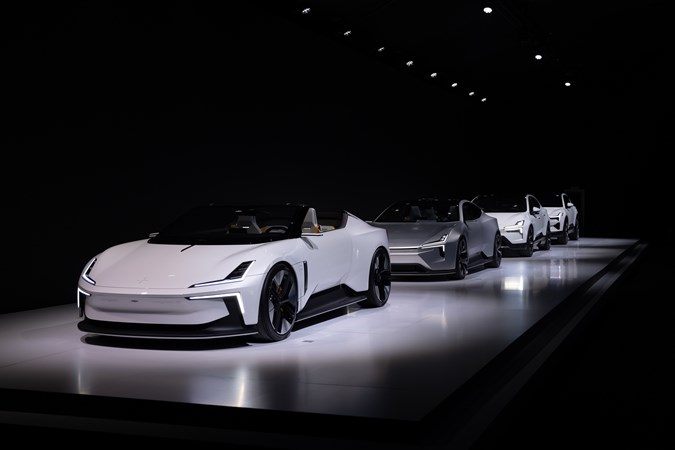
Despite having now stepped down from his duties at Volvo and Polestar, his attitudes persist today. Polestar is achingly on trend, especially concerning its uncompromising focus on sustainability. We’ll use the Polestar 4 as an example to illustrate our point. The car’s carpets are made from recycled fishing nets, while the plastics on its door cards are hewn from natural fibres (rather than crude oil).
Thomas Ingenlath, former lead designer at Volvo and current CEO of Polestar, explained his brand’s positioning, stating: ‘Volvo is clearly defined by its comfort, safety and practicality. Polestar is not bound by this. Polestars will be designed more around the individual and be more progressive and performance oriented.’
Ingenlath also wants to offer more ‘complete performance electric cars’ than his current rival brands. He said: ‘Electric cars now are defined by their acceleration. That’s useless in day-to-day driving, and sometimes they’re so fast they can be frightening. We will make cars that are really enjoyable to drive in handling, steering and in overall everyday performance.’
Below, we’ve outlined Polestar’s entire range from when it was reinvented as an electrified car manufacturer at the turn of the 2020s. Our list includes the company’s discontinued, current and upcoming vehicles to give you a flavour of both its roots and its future. Scroll down to learn more.
Polestar electric cars
Polestar 1

The Polestar 1 was the company’s first standalone car. Unlike every other Polestar-badged vehicle that came before it, the 1 was a plug-in hybrid. It was also a limited-run model, available in left-hand drive only, with just 1,500 examples built worldwide.
It might be a niche offering, but it wins the PHEV Top Trumps tournament. The electric part of its powertrain comprises a 34kWh battery pack and two electric motors that can provide a maximum electric range of 93 miles. No other PHEV since has been able to match that. It’s quick, too – when its 2.0-litre petrol engine and electric motors are working in tandem, the 1 has a combined output of 609hp and 1,000Nm of torque which Polestar says is enough for a 0–62mph time of 4.2 seconds.
Read our Polestar 1 review
Polestar 2
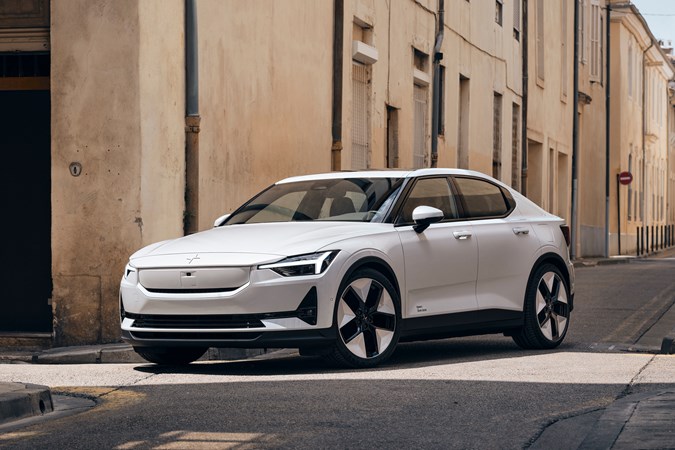
The 2 was Polestar’s first pure-electric vehicle. It was launch in 2020 with the aim of stealing sales from the ever-popular Tesla Model 3 – and, on the surface, it’s a solid contender. Like the Tesla, the Polestar 2’s interior is fabulously stylish. It also has an equally impressive real-world range of 330 miles and it’s similarly fast when equipped with Polestar’s 476hp Performance Pack.
We also like the Polestar’s Google-powered infotainment system because it’s delightfully easy to use. But the 2 isn’t perfect. Its suspension is far too harsh – and it’s especially uncomfortable for those in the back. Headroom here is at a premium and passengers sit almost directly over the rear axle, which means jolts are transmitted directly from the wheels into their spines. Taller passengers might also find their heads grazing the roof over the sharpest bumps.
Read our Polestar 2 review
Polestar 3
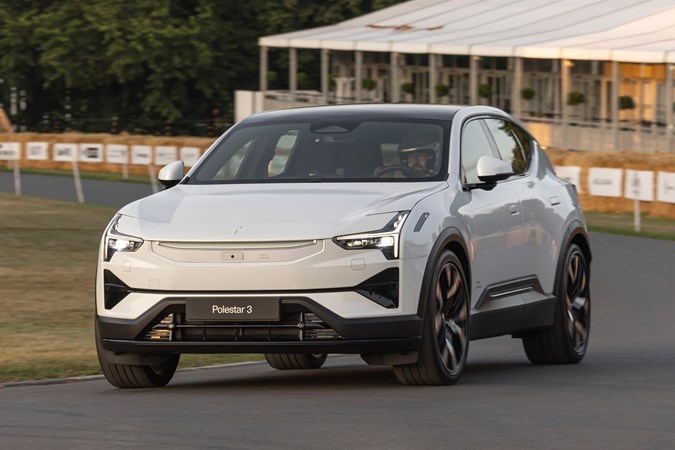
The Polestar 3 is based on the same underpinnings as the all-new Volvo XC90 SUV, but its styling takes on a more estate-like appearance. The reason? Aerodynamics. Polestar says the 3 can cover up to 379 miles between charging stops, thanks in equal measure to its lower roofline, various aero appendages and 111kWh battery pack.
It’s also rather quick. The Long Range Dual Motor model features two electric motors that offer a combined output of 489hp and 840Nm of torque. Polestar says that’s enough for a 0–62mph time of five seconds and a top speed of 130mph, which is repectable for a family bus. Buyers will also be able to specify a Performance Pack, which increases output to 517hp and 910Nm of torque.
Read our Polestar 3 review
Polestar 4
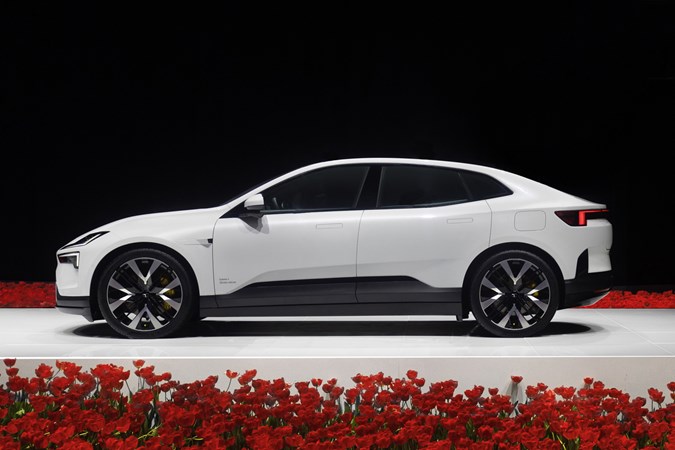
Polestar unveiled its latest vehicle at the 2023 Shanghai Motor Show. It’s another coupe SUV, designed to rival the likes of the Kia EV6 and Tesla Model Y – and, when it hits the showrooms in 2024, it’ll become the brand’s new fastest car. The flagship model features two electric motors with a combined output of 544hp, which Polestar says is enough for a 0–62mph time of 3.8 seconds.
It’s more than just a road rocket, though. If you opt for the entry-level, single motor, rear wheel drive variant, Polestar reckons you’ll have a competent long-distance cruiser. It has a maximum WLTP range of 373 miles, which should equate to a comfortable 300 miles of range in the real world. We’re looking forward to driving the Polestar 4 next year. Check back soon for our review.
Polestar 5
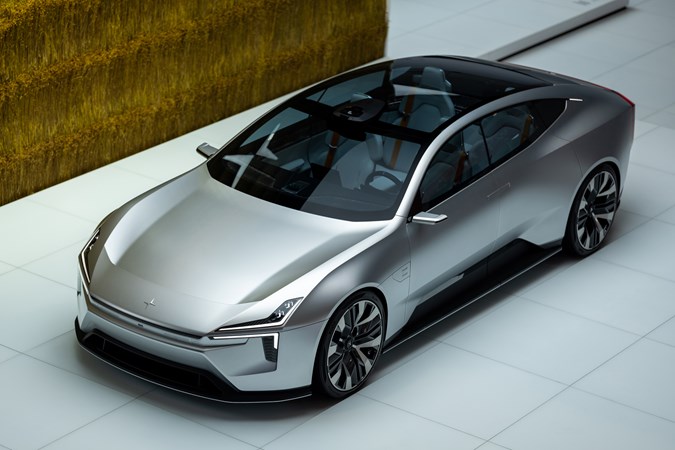
The Polestar 5 will hit showrooms in late 2024, becoming a fresh rival for the Porsche Taycan and Tesla Model S. It’s the first car to spring from Polestar’s new UK R&D complex at the MIRA facility in the Midlands – and it represents somewhat of a step change in the company’s technology.
It’s underpinned by a lightweight bonded aluminium platform which utilises the same technology used by sports car makers such as Aston Martin and Lotus. It also features a superfast 800-volt electrical system, like you’ll find in the Kia EV6. Plus, it promises to be eye-wideningly fast. Polestar is yet to confirm the 5’s performance figures, but we understand it’ll have two electric motors serving up a gargantuan 884hp.
Polestar 6
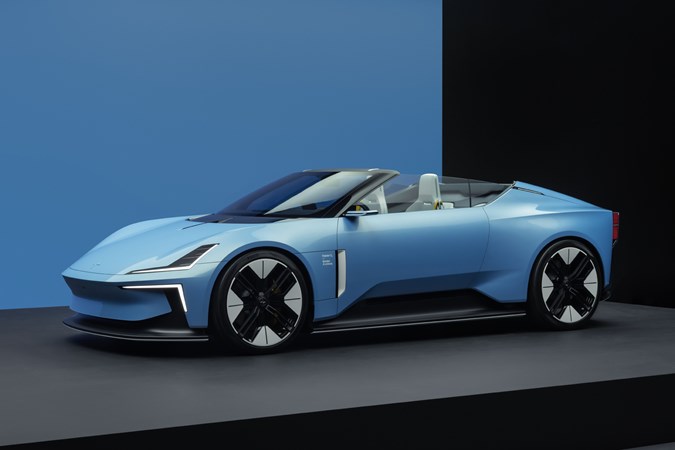
Polestar teased its first electric convertible as a concept car in March 2022. Before the year was out, though, the company had confirmed that it would put the car into production. It’s an open-top, limited-edition version of the 5 saloon which features the same front end, the same bonded aluminium architecture and the same stonking 884hp electric powertrain.
The 6 isn’t set to enter production until 2026, but Polestar sold out its entire first production run of 500 cars within a week of making the car’s existence public knowledge. It isn’t like the car’s cheap, either – each one will cost around £170,000.
Polestar batteries and charging technology
Polestar has partnered with the technology company StoreDot to advance its battery and charging tech. StoreDot is developing a new type of extreme fast charging battery pack which uses nano-sized silicon particles in its chemistry. By 2024, the company aims to produce a battery pack that can take on 100 miles of range after just five minutes of charging – and by the time 2032 rolls around, the company hopes to have slashed that wait time down to just two minutes.
Polestar isn’t the first company to approach StoreDot, either. There are some big names pinning their hopes on the technology, including Volvo, Daimler and the Vietnamese electric car manufacturer Vinfast, all of which are keen to make their electric cars more convenient.
‘Charging and range anxiety are common concerns holding owners of combustion engine cars back from making the switch to EVs,’ said Polestar CEO Ingenlath. ‘StoreDot’s advanced battery technology potentially provides real solutions to these obstacles. If our current pilot projects with StoreDot are successful, we could see these solutions being implemented in Polestar cars by 2026.’
Polestar’s sustainability goals
Polestar has set its sights on building its first CO2 neutral car by 2030, putting the company years ahead of most nations’ sustainability goals. The initiative is called Polestar 0 and, unlike its rival car companies, Polestar won’t achieve climate neutrality by offsetting its emissions. This is a scheme that involves planting loads of trees to recapture the CO2 produced during manufacturing processes.
But Polestar questions whether the practice of carbon offsetting is sustainable in the long-term. In a statement, the company suggests that ‘a forest might be logged, devastated by fire or altered by climate change,’ therefore negating any climate benefits it could provide.
Polestar’s head of sustainability, Fredrika Klarén, said: ‘We’re electric, so we don’t have to worry about combustion engines producing toxic emissions – but that doesn’t mean our job is done. We will now work to eradicate all emissions stemming from production.’
The company already incentivises climate neutrality amongst its workforce by linking its climate targets into its employee bonus scheme. The brand also takes a very visible approach to emissions with its cars. The carbon footprint credentials of each of its car (starting from the 2) are published online, allowing drivers to check their car’s climate impact in the same way they can check the calorific impact of a McDonalds Big Mac.
Just so you know, we may receive a commission or other compensation from the links on this website - read why you should trust us.


